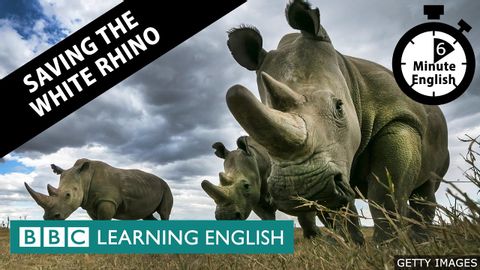拯救白犀牛 - 6分鐘英語 (Saving the white rhino - 6 Minute English)
 沒有此條件下的單字
沒有此條件下的單字US / dɪˈbet/
・
UK /dɪ'beɪt/
- n. (c./u.)辯論;爭論;辯論會
- v.t./i.思考;盤算;辯論
US /ˈdɛlɪkɪt/
・
UK /'delɪkət/
US /dɪˈvɛləp/
・
UK /dɪ'veləp/
- v.t./i.詳盡闡述;建立;打造;(使)成長;發展;沖洗(底片);罹患;產生;培養;發展
US /ˈprɛʃəs/
・
UK /'preʃəs/
- adj.可愛的;極少的;珍貴的;過分講究的;昂貴的;寶貴的
